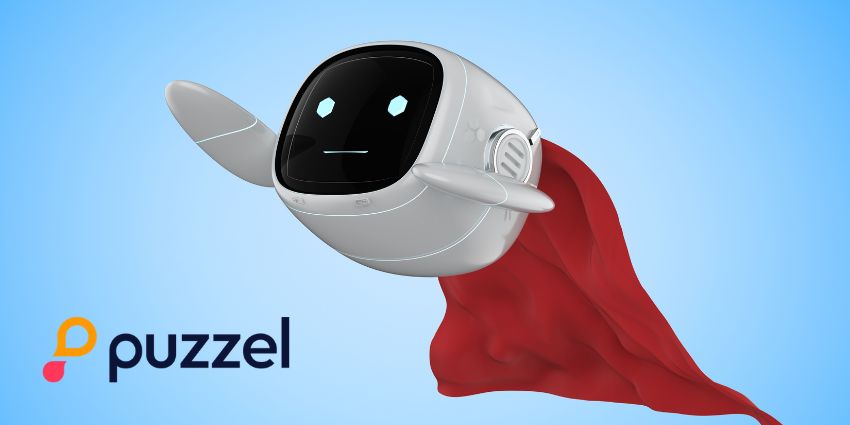Over 50 percent of customer experience leaders have prioritized investments in real-time agent-assist technology, according to a 2025 CMP Research study.
In doing so, they’re unlocking many powerful new use cases to improve agent experiences.
For instance, some applications can auto-draft responses across digital channels, so agents simply have to review, edit, and send them off to customers.
Additionally, when an agent is on the phone, the tech might proactively feed them relevant knowledge articles to accelerate a path to resolution.
Further use cases include real-time transcriptions, auto-summarizations, and automated coaching suggestions. Yet, these are just some of the many possibilities.
As contact center providers stretch the limits of generative and agentic AI innovation, many more will likely emerge.
However, while that’s an exciting possibility for many market evangelists, agent-assist deployments still, in many cases, underwhelm.
Indeed, some contact centers have uncovered the hidden downsides of the tech, derailing their deployments and infuriating agents, the very people the tool should “assist”.
The Downsides of Contact Center Agent Assist
No one doubts the potential of agent-assist software. However, a 2025 paper from a select group of Chinese universities spotlighted how the tech is frustrating customer service reps.
The study, “Customer Service Representative’s Perception of the AI Assistant in an Organization’s Call Center“, found shortcomings in even the simplest use cases.
Take real-time transcription, for instance. Researchers found that often the tech would freeze after transcribing the first ten minutes of a call. They also found frequent transcription errors when customers would switch between languages, accents, and dialects.
Moreover, reps reported the AI’s inability to interpret phone numbers and addresses as a common concern, resulting in frequent manual corrections.
The paper summarized that repeated errors like this have placed three new types of burden on contact center agents. These are:
- A Learning Burden – When agent-assist tech fails to perform tasks, like accurately transcribing phone numbers and addresses, agents have to learn workarounds, adding to their cognitive load.
- A Compliance Burden – Often, AI-generated outputs won’t align with internal policies, as most large language models aren’t domain-specific. As such, agents can spend quite some time making sure outputs are compliant.
- A Psychological Burden – Think of use cases like next-best action. If the suggested action is superfluous, that can irritate agents during busy, high-pressure moments. It can also distract them from listening closely to customers.
While this is just a single study, with a small sample size, others have hinted at the hidden downsides of agent-assist technology.
More Than Just One Study…
While few other studies have honed in on contact center agent-assist technology specifically, some have highlighted agent resistance to new tools.
For instance, in 2023, a paper by the research firm Gartner found that 45 percent of contact center agents avoid adopting new tech.
Contact centers can allay such issues with a comprehensive agent buy-in strategy. However, the underwhelming performance of agent-assist tooling is a significant factor.
Janet Vito, Senior Vice President of Marketing at Cyara, said she’s heard from many customers who previously faced three core challenges when deploying agent-assist technology:
- Accuracy of responses – Poorly trained bots can deliver incorrect or inconsistent information, frustrating agents and customers alike.
- Timeliness of information – Even accurate advice is ineffective if it arrives too late during a live interaction.
- Integration complexity – Ensuring agent-assist tools function correctly within complex contact center environments is difficult and time-consuming. (But skipping this critical step is risky and can potentially cost more than time and resources; it may also have reputational or financial consequences.)
Given this wide margin for mishaps, contact centers should consider an alternative approach for implementing contact center agent-assist that safeguards agent and customer experiences.
A Better Way to Implement Contact Center Agent-Assist Tech
Validating agent-assist tech is the typical approach contact centers take to overcome the abovementioned challenges. However, that’s easier said than done.
After all, to validate thousands of scenarios, which may take between two and five minutes each, quality analysts will spend weeks running through mundane tasks.
They’ll also have to establish a testing process for when new scenarios emerge.
A much better way is to implement Cyara Agent Assist Assurance (Cyara AAA), a solution that plugs into the platforms enterprises already use, with custom connectors for Genesys Cloud, the Google Customer Engagement Suite, Kore.ai, and many others.
Introducing the solution, Vito said:
These connectors allow Cyara to test agent-assist capabilities directly within the agent workspace, validating not just if the advice is accurate, but if it’s delivered in time and in context. This ensures a consistent, high-quality experience for agents and customers alike.
In doing so, Cyara simulates authentic, end-to-end conversations between customers and agents, sending out alerts whenever it uncovers an issue for IT to address.
A Cautious Approach That Won’t Stall Innovation
Agent-assist technology promises to transform the contact center agent role. However, like any enterprise technology, it needs proper testing.
These long testing processes can stall innovation and disengage agents. That’s a problem in a space on the cusp of AI transformation.
Cyara AAA promises to accelerate the process and support contact centers throughout their AI initiatives, with the vendor expanding its assurance capabilities to bolster support for future agentic AI-based agent-assist platforms.
“Cyara’s focus remains on ensuring that even as AI becomes more capable, it remains trustworthy, accurate, and timely,” summarized Vito. “These are core pillars of exceptional experiences.”
To learn more about Cyara AAA, visit: cyara.com







